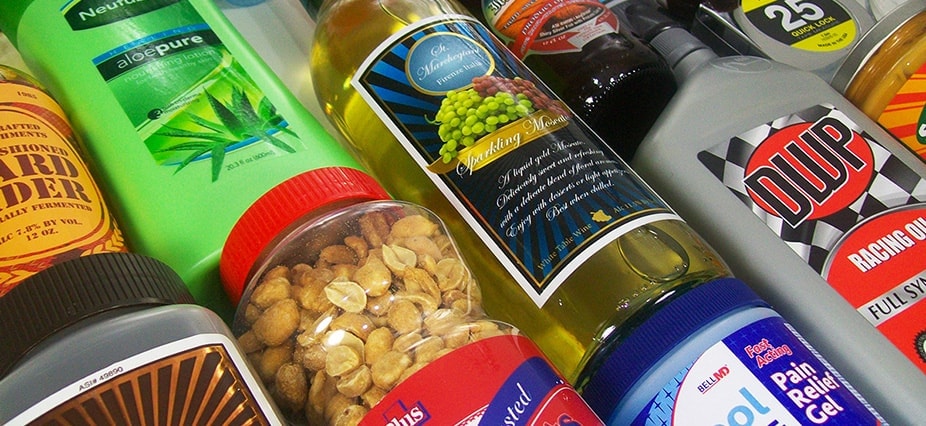
Distinctive labels showcasing dramatic design get attention and can help separate one product from the herd. At the same time, a pretty powerful label design may create problems with what the label is designed to accomplish.
Get your customers thinking about an issue that has occupied the minds of the label world as long as there have been labels. Some label design questions to ask: What are these labels supposed to accomplish overall? What image does the customer want to project with these labels (e.g., folksy and down home, highly polished and professional)? Who is/are the primary audiences? Is looking dramatically different to stand out on a shelf the chief concern? Is there key information that needs to be easily read (e.g., without having to use a magnifier to decipher two-point type)? What have historical buying and customer feedback patterns told you about what purchasers do or don’t want to see in your product labels?
For example, if your customer’s chief market is seniors, then easily readable, high-contrast primary information (and minimizing tiny type) can become extremely important considerations. Responses to different color schemes and graphics vary considerably, potentially depending on such factors as age, gender, demographics and psychographics.
Here are two straightforward ways to check it all out:
1. If you already know a substantial amount about the customer, product(s), and target markets, conduct your own informal “audit” of the labels they’re using now—and list out recommendations for change.
2. If you don’t know, find a suitable time to ask the customer questions that will form the basis of recommendations going forward. To start the process, feel free to use the questions identified above, tailored of course to specific product(s) and distribution strategy.
As part of this process to get your customers thinking about ways to improve label design, and consequently sales, you may want to check out relevant trends, discoveries, and research that reinforce key points you want to make with that customer. For example, articles discussing consumer disdain over label type too small to read or the emerging use of black-and-white and spot colors to stand out in a color-saturated world may prove timely and effective in getting your customers to redevelop or refine their label presentation.
